| Columns Retired Columns & Blogs |
B&W 802D loudspeaker Measurements
Sidebar 3: Measurements
I estimated the B&W 802D's voltage sensitivity as 89dB(B)/2.83V/m, within experimental error of the specified 90dB figure and usefully higher than the average of the more than 500 speakers I have measured in the past 16 years. The B&W's impedance plot (fig.1) reveals the speaker to be moderately difficult to drive, with a magnitude that drops to 3 ohms throughout the upper bass and an awkward combination of 4 ohms and –50° electrical phase angle at 60Hz. In addition, the very high peak between 2 and 3kHz, resulting from the tweeter/midrange crossover, will give a somewhat forward tonal balance with amplifiers having a significant source impedance; say, tube models.
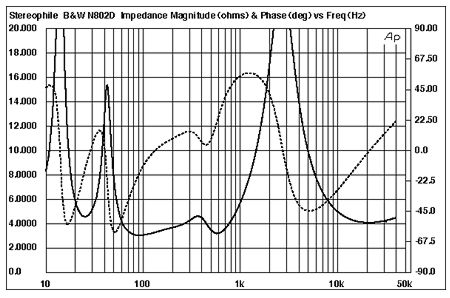
Fig.1 B&W 802D, electrical impedance (solid) and phase (dashed). (2 ohms/vertical div.)
B&W's use of its Matrix construction technique in the 802D's woofer enclosure makes the speaker acoustically inert. Fig.2, for example, shows a cumulative spectral-decay plot calculated from the output of an accelerometer fastened to the sidewall 12" from the top. Just one mode can be seen above the –30dB floor of this graph, at the frequency of the upper impedance peak in the bass, but this is still so far down in level as to be insignificant. I performed a similar analysis of the midrange enclosure's vibrational behavior, but I haven't shown it because it indicates nothing going on above the graph's floor. Nothing. De nada. Rien. This speaker has one inert cabinet (or two).

Fig.2 B&W 802D, cumulative spectral-decay plot calculated from the output of an accelerometer fastened to the center of the cabinet's side panel 12" from base (MLS driving voltage to speaker, 7.55V; measurement bandwidth, 2kHz).
The saddle centered at 26Hz in the impedance-magnitude trace (fig.1) suggests a very low tuning frequency for the downward-firing port. This is confirmed by the port's frequency response, measured in the nearfield (fig.3, blue trace). This covers quite a wide bandpass, centered on the woofers' minimum-motion frequency of 26Hz (red trace), with a couple of low-level peaks evident in the midrange. The woofers cross over to the midrange unit (green) just above 300Hz, with what appear to be asymmetrical slopes: second-order low-pass to the woofers, and third-order high-pass to the midrange. (All these traces are plotted in the ratio of the root of the radiating areas.) The overall sum of these individual low-frequency responses, taking acoustic phase into account, is the black trace in fig.3. While there appears to be a touch of boost in the upper bass, some of this will be due to the nearfield measurement technique. The B&W is pretty much maximally flat to 30Hz, which is impressive bass extension.
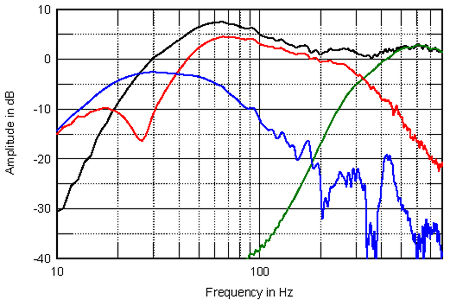
Fig.3 B&W 802D, nearfield responses of midrange unit (green), woofer (red), and port (blue), with the complex sum of the nearfield woofer and port responses, taking into account acoustic phase and distance from the nominal farfield point (black).
This low-frequency curve is repeated on the left side of fig.4, which otherwise shows the 802D's farfield response averaged across a ±15° horizontal window on the tweeter axis. Again, some of the upper-bass boost will be due to the measurement technique, but I note that Kal Rubinson did find the speaker's low frequencies to be balanced on the ripe side of neutrality, which is what I would have expected from this graph. Moving higher in frequency, the 802D's mid-treble is slightly uneven, but the response is otherwise very flat, particularly in the midrange. The diamond-dome tweeter is also giving out pretty much full level to the 30kHz limit of this graph, which is where my measurement microphone's calibration ends.
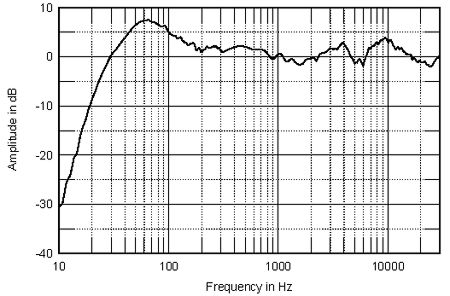
Fig.4 B&W 802D, anechoic response on tweeter axis at 50", averaged across 30° horizontal window and corrected for microphone response, with the complex sum of the nearfield midrange, woofer, and port responses, taking into account acoustic phase and distance from the nominal farfield point, plotted below 300Hz.
As can be seen from the B&W's horizontal dispersion pattern (fig.5), however, the tweeter is quite directional at ultrasonic frequencies. This graph also shows that the midrange unit also gets directional at the top of its passband, which contrasts with the very wide dispersion of the tweeter at the bottom of its passband. This might well make the B&W sound a little bright in underdamped rooms, though it might be compensated for by the fact that the on-axis response has a slight lack of energy in the same region. In the vertical plane (fig.6), a major upper-crossover suckout develops above the tweeter axis, which is a high 44.5" from the floor. Sitting with one's ears 5–10° below the tweeter axis gives the flattest treble, though then, of course, the mid-treble flare in the lateral radiation pattern might have an effect in a lively room. As always, experimentation with listening position and room acoustics will be necessary to get the flattest possible in-room balance from the B&W 802D.
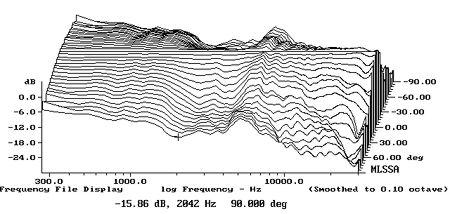
Fig.5 B&W 802D, lateral response family at 50", normalized to response on tweeter axis, from back to front: differences in response 90–5° off axis, reference response, differences in response 5–90° off axis.

Fig.6 B&W 802D, vertical response family at 50", normalized to response on tweeter axis, from back to front: differences in response 15–5° above axis, reference response, differences in response 5–15° below axis.
The 802D's step response (fig.7) indicates that all four drive-units are connected in positive acoustic polarity, with the tweeter's output arriving first at the microphone, followed in quick succession by that of the midrange unit and the woofers. Even with its set-back tweeter, the speaker is not time-coincident. However, it is time-coherent, in that the step response of each unit smoothly integrates with that of the next lower in frequency. This correlates with the flat frequency-domain response seen in fig.4. The 802D's cumulative spectral-decay plot (fig.8) is very clean in the treble region, suggesting that the B&W's midrange unit and tweeter are world-class.
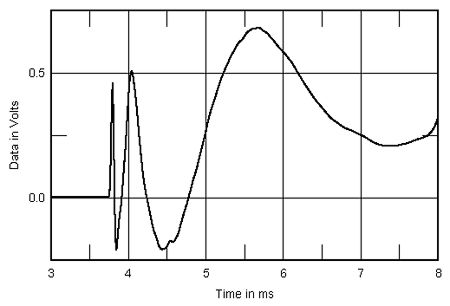
Fig.7 B&W 802D, step response on tweeter axis at 50" (5ms time window, 30kHz bandwidth).
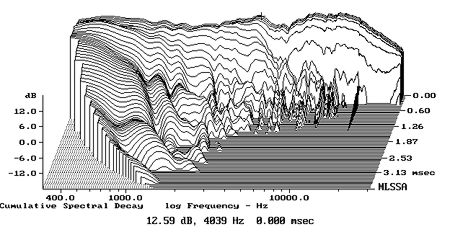
Fig.8 B&W 802D, cumulative spectral-decay plot at 50" (0.15ms risetime).
I heard a prototype of the 802D when I took time off from a vacation in the UK in fall 2004 to spend a day at B&W's R&D center in the Sussex village of Steyning. To judge from the speaker's measured behavior and from KR's auditioning notes, the promise I heard on that visit appears to have been fulfilled.—John Atkinson
- Log in or register to post comments




































